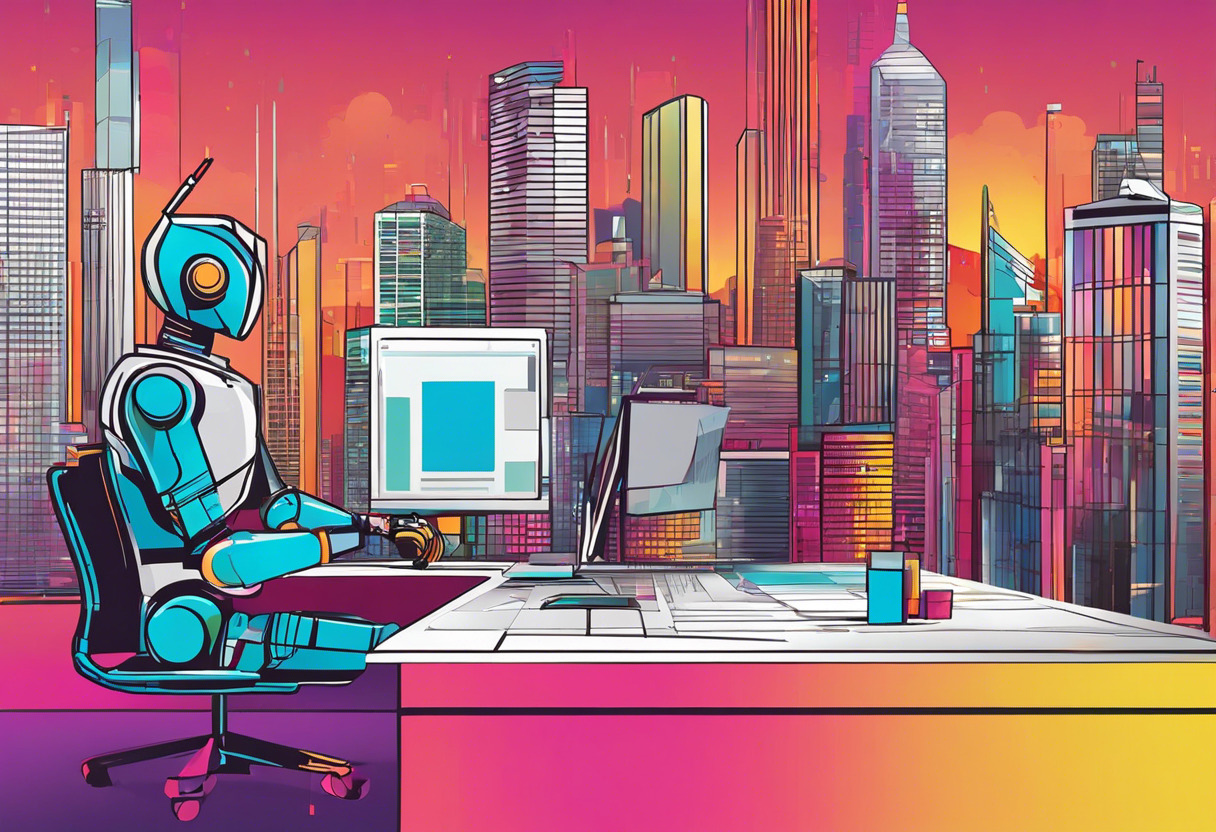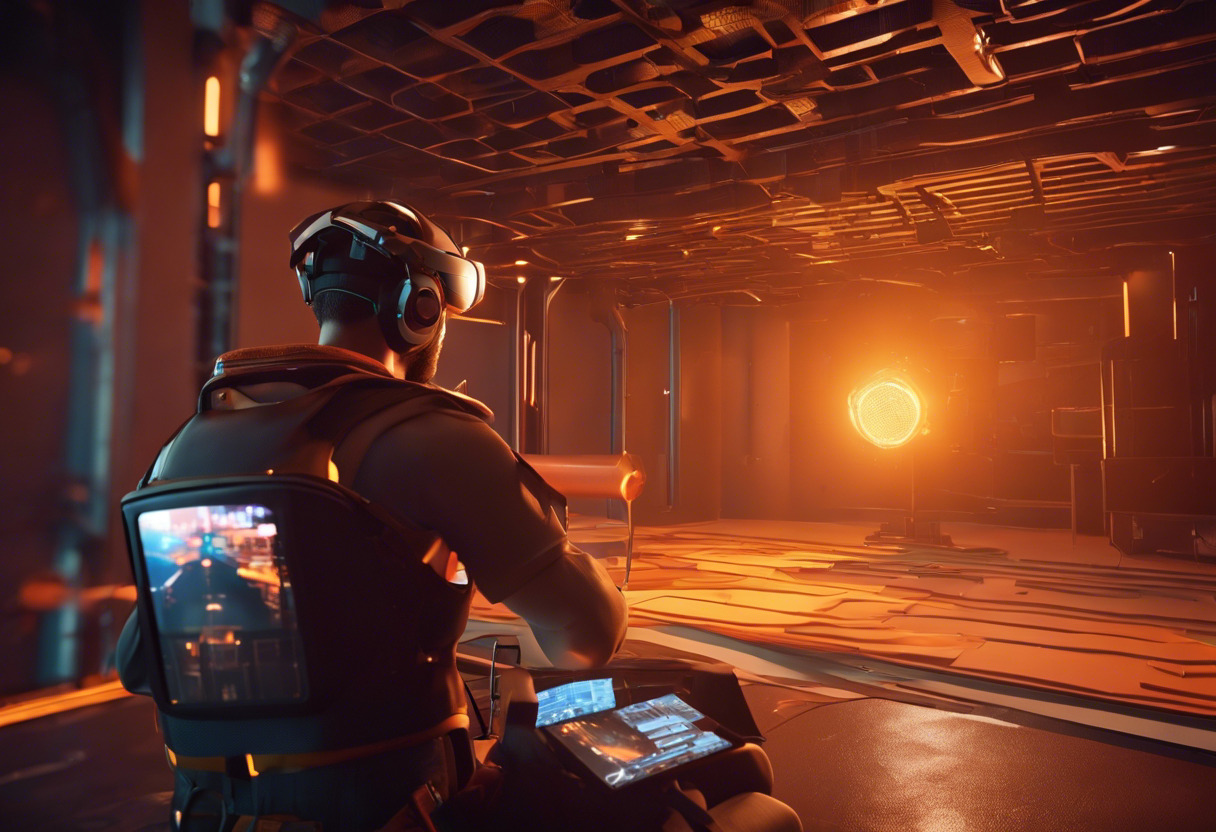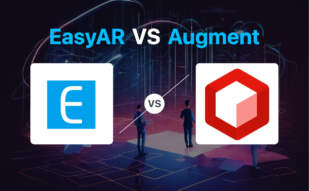If exploring the unknown through an enhanced real-world lens is your objective, choose Augmented Reality. However, for data-centric applications with intelligent and automated decision-making, go with Artificial Intelligence.

Key Differences Between Augmented Reality and Artificial Intelligence
- AR amplifies the user’s environment, AI automates decision-making via algorithmic intelligence.
- AR’s standing industries: retail, entertainment, gaming, and manufacturing. AI’s forte: tech, banking, entertainment.
- AR thrives on object recognition and interaction in real-time; AI advances by processing big data and machine learning.
- What enables AR: Mobile devices, AR software, sensors; for AI: Data, algorithms, and computing power.
| Comparison | Augmented Reality | Artificial Intelligence |
|---|---|---|
| Initial Development | 1968 by Ivan Sutherland | Early 20th century |
| First Major Milestone | First commercial AR application in 2008 | First AI program, Logic Theorist, in 1956 |
| Technologies Used | AI, AR software, processing, lenses, sensors | Data, algorithms, and human feedback |
| Methods | Marker-based and marker-less types | Machine Learning, Natural Language Processing, Computer Vision |
| Recent Popularity | Growth by AR games and apps, expanded 5G network | Common-use of AI tools, surge in AI funding, popularization of Deep Learning |
| Future Potential | AR glasses for first-person immersive AR experience | AI language, driverless cars, surpass human cognitive abilities |
| Industries Applied | Retail, entertainment, gaming, learning, manufacturing | Tech, banking, marketing, entertainment |
What Is Tech Co A and Who’s It For?
Tech Co A, an industry leader harnessing the power of Augmented Reality (AR). Catering to businesses in marketing, tourism, retail, and the cultural sector, it focuses on transforming static environments with digital overlays, creating interactive experiences for users. Tech Co A’s solutions integrate seamlessly with the modern individual’s lifestyle, aiding in remote work, providing visual aid for learning and even enhancing cultural exploration.
Tech Co A’s target demographic includes marketing agencies, forward-thinking businesses in fashion and retail, and cultural institutions – all of which understand the benefits of an immersive, interactive customer experience.

Pros of Tech Co A
- Creates immersive experience through AR glasses and overlays
- Transforms remote work with enhanced collaboration
- Provides real-time augmentation within environmental context
Cons of Tech Co A
- Reliance on machine learning, AR software and processors
- High dependency on mobile devices for tracking systems
- Interactions limited to device capabilities
What Is Tech Co B and Who’s It For?
Tech Co B champions the cause of Artificial Intelligence (AI), pioneering implementations for data processing, algorithms, and human feedback. The company is not just for technological enthusiasts but for anyone in sectors like finance, marketing, and entertainment. It uniquely harnesses AI’s potential to exceed human intellect through vigorous algorithms and machine learning.
Its clientele includes tech enterprises, banking and marketing professionals, and agencies keen on embracing AI’s predictive power and high throughput data processing.

Pros of Tech Co B
- Leverages AI’s advancement for high throughput data processing
- Capable of continuous learning from new input data
- Has potential to surpass human cognitive abilities
Cons of Tech Co B
- Initial high computing costs
- Dependent on the expansion of algorithmic toolkit
- Fragmented funding and interest periods
Code Examples for Augmented Reality & Artificial Intelligence
Augmented Reality
This code snippet centers on the use of AR.js, a popular javascript library for creating AR experiences, and A-Frame, a web framework for creating 3D and Virtual Reality experiences. We’ll demonstrate how to create an intended AR marker that will project a textured 3D model when identified. A technology stack requirement includes having a web server to host the model object and image texture files.
<a-scene embedded arjs='sourceType: webcam;'>
<a-marker-camera preset='hiro'>
<a-entity obj-model='obj: url(model.obj); mtl: url(model.mtl)'></a-entity>
</a-marker-camera>
</a-scene>
Artificial Intelligence
In this example, we leverage TensorFlow.js, Google’s web-based machine learning library. Our goal – create a linear regression model that predicts output based on input. Dependencies include TensorFlow.js library. It is assumed that you have a basic understanding of creating and training models in TensorFlow.js.
const model = tf.sequential();
model.add(tf.layers.dense({units: 1, inputShape: [1]}));
model.compile({loss: 'meanSquaredError', optimizer: 'sgd'});
const xs = tf.tensor2d([1, 2, 3, 4], [4, 1]);
const ys = tf.tensor2d([1, 3, 5, 7], [4, 1]);
model.fit(xs, ys, {epochs: 10}).then(() => {
model.predict(tf.tensor2d([5], [1, 1])).print();
});
AR vs AI: Your Choice Decoded
We traverse into a crux assessment of Augmented Reality(AR) and Artificial Intelligence(AI), drawing on their characteristics, potential, and unique efficacies. Deciding between the two depends largely on the user category and overarching technological needs. Let us delve into specific audience segments and their most favorable tech choice.
1. AR/VR Creators, Game Developers
AR, with its SLAM and depth tracking technologies, engages users in an immersive experience, enhancing real-world surroundings with digital overlays. Here, we’re looking atmarker-based and marker-less forms that dictate image display types, information presentation, and provide real-time augmentation. AR offers significant opportunity in the gaming industry and might hence be the ideal pick for this category.
2. Marketers, Retail Industry Professionals
While AI can process massive amounts of customer behavior data, AR brings a unique ‘try on’ feature aiding e-commerce. The ability of AR to engage customers at events or retail spaces, offer virtual tours, and improve the shopping experience gives it an edge for marketers.
3. Tech Entusiasts, Researchers
AI takes the crown here. With its deep learning capabilities, AI makes a compelling case with robotic process automation, natural language processing, and computer vision. It’s an ever-evolving field, pushing boundaries continuously.
4. Cultural Institutions, Remote Workforces
AR opens up new possibilities for these sectors. For cultural institutions, AR can offer extra information about exhibits, while for remote workforces, it can enhance collaboration, assisting virtual interaction.
When weighing AR against AI, consider application, audience, and end-user benefits. For immersive experience, pick AR. For processing massive data, go AI. Understand your needs, choose wisely.
Tiffany Brise
Content writer @ Aircada, patiently awaiting a consumer AR headset that doesn’t suck.





